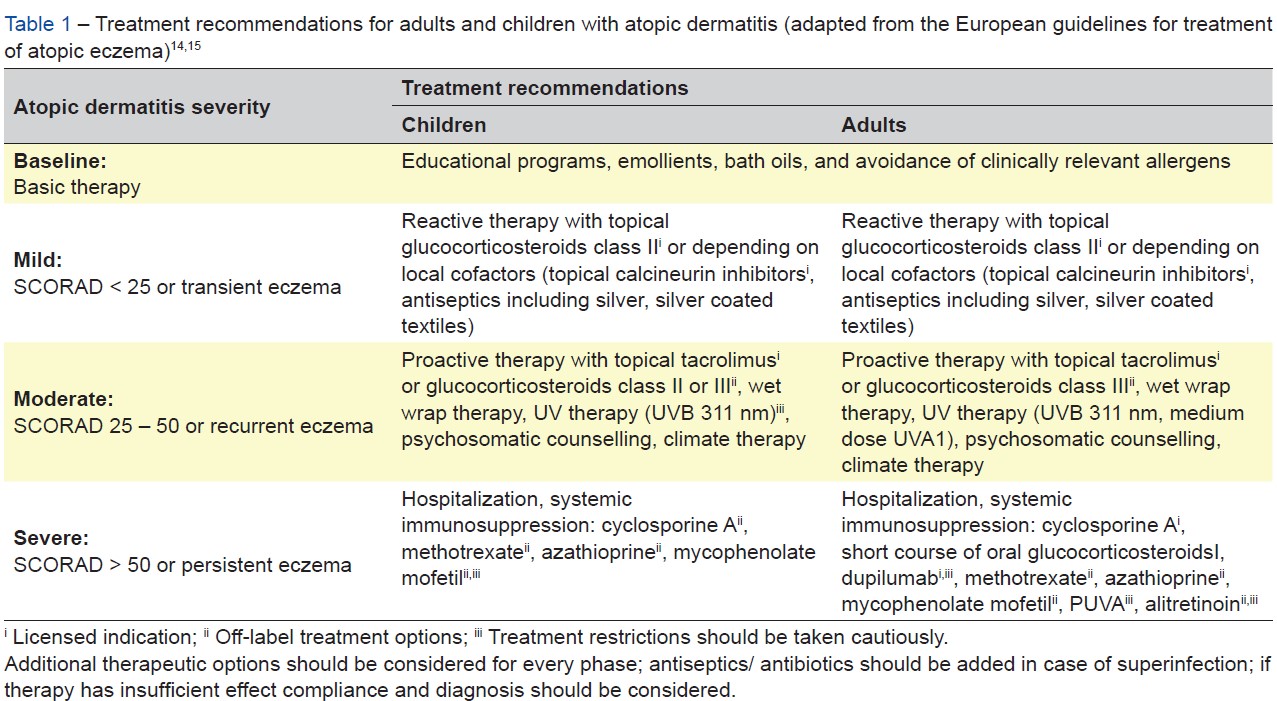SOCIAL MEDIA
Portuguese Medical Association's Scientific Journal

With an increasing prevalence during the past decades, atopic dermatitis has become a global health issue. A literature search following a targeted approach was undertaken to perform this non-systematic review, which intends to provide an overview of the epidemiology, pathophysiology, clinical features, comorbidities, and current therapies for the treatment of atopic dermatitis. In sum, this is a heterogeneous skin disorder associated with variable morphology, distribution, and disease course. Although not completely understood, its pathogenesis is complex and seems to result from a combination of genetic and environmental factors that induce skin barrier dysfunction, cutaneous and systemic immune dysregulation, skin microbiota dysbiosis, and a strong genetic influence. Diagnosis is based on specific criteria that consider patient and family history and clinical manifestations. Overall disease severity must be determined by evaluating both objective signs and subjective symptoms. Therapeutic goals require a multistep approach, focusing on reducing pruritus and establishing disease control. Patients should be advised on basic skin care and avoidance of triggers. Topical anti-inflammatory agents should be considered in disease flares or chronic/recurrent lesions. In case of inadequate response, phototherapy, systemic immunosuppressants and, more recently, dupilumab, should be added. Nevertheless, the treatment of moderate-to-severe atopic dermatitis remains challenging and novel, efficacious, safe and targeted treatments are urgently needed. In conclusion, although the last few years have seen important improvement in the understanding of the disease, future research in atopic dermatitis will continue exploring gene-environment interactions and how it affects pathophysiology, disease severity, and treatment outcomes.